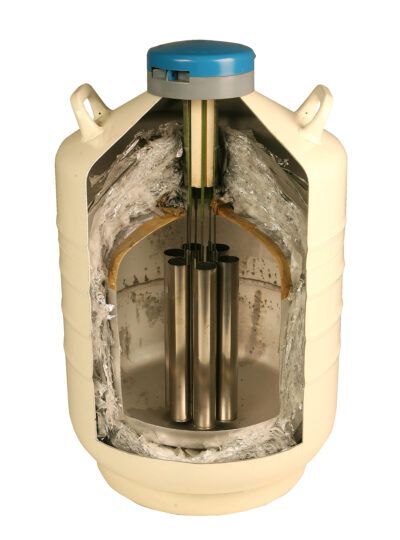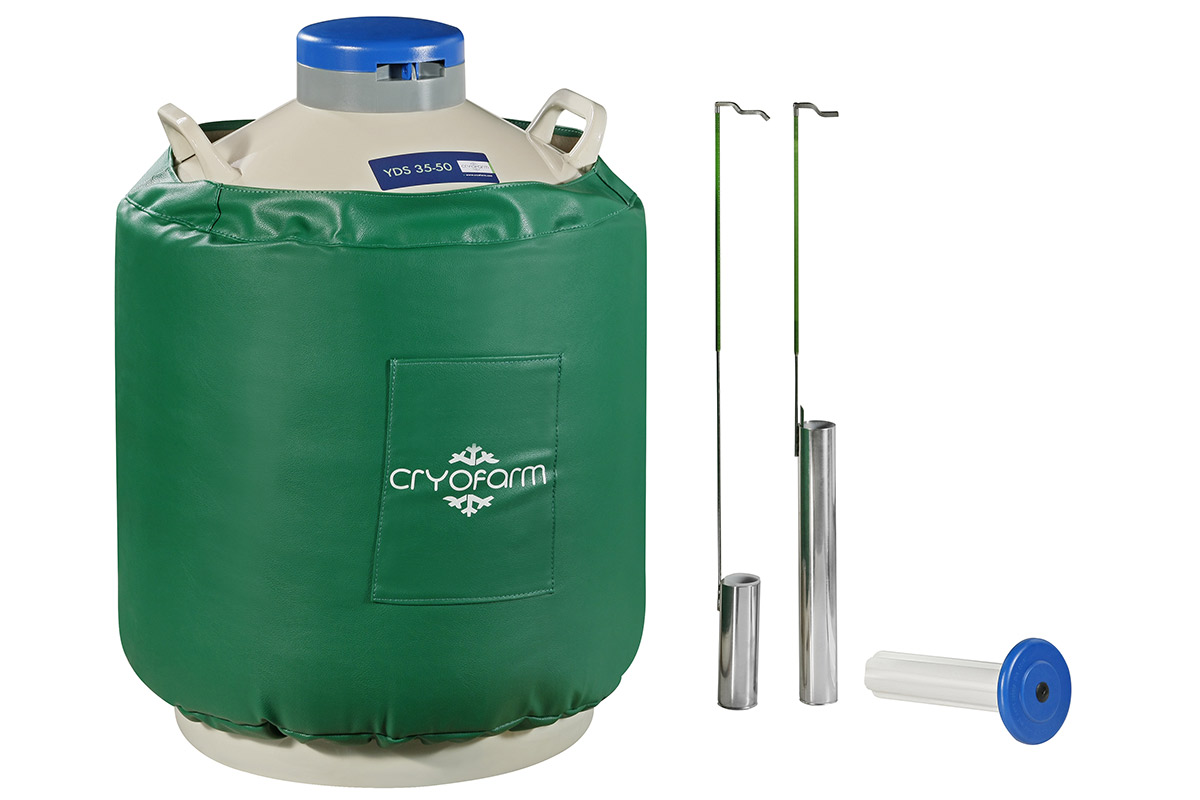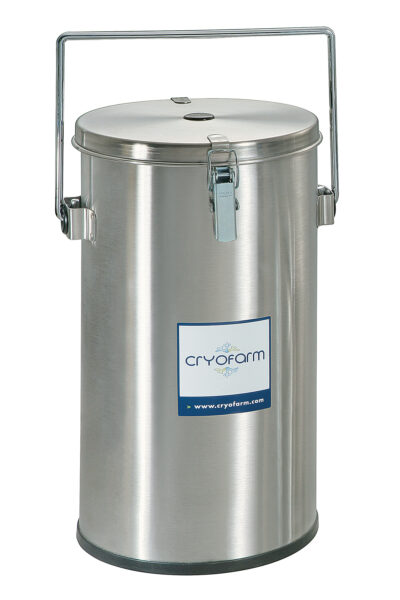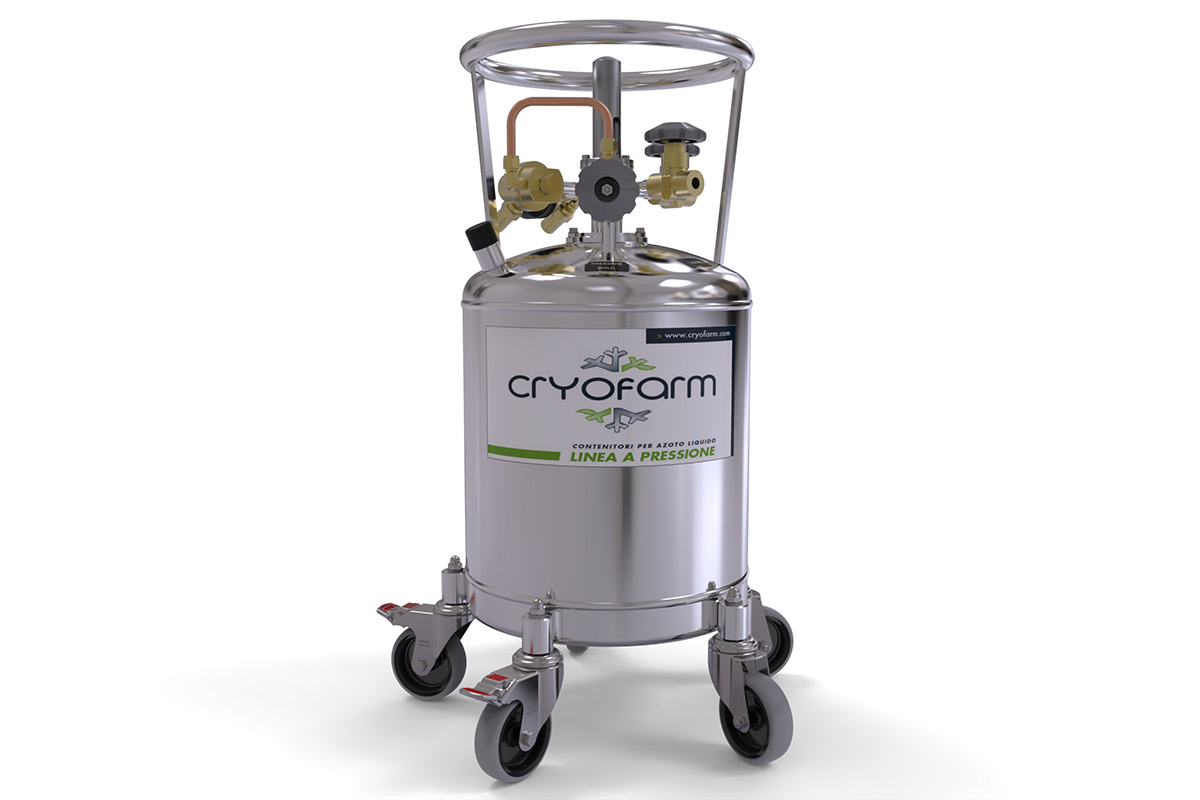Dewar Cryofarm aluminum containers are designed to ensure the maximum duration when nitrogen is liquid, thanks to a special thermal insulation that drastically reduces the evaporation. In addition, the inner neck that connects the mouth of the container to the inner container is made of fiberglass to isolate the main sources of dispersion. The fiberglass links of the canisters are made of excellent quality too, lending them the right level of elasticity, strength and insulation.
In addition, containers are equipped with a valve that, thanks to the double seal, ensures the endurance of the gap vacuum-sealed.
The Dewar Cryofarm also have two special features:
- small pedestal at the base that lifts them from the ground allowing greater thermal insulation, cushioning shocks and helping to avoid corrosion of the bottom;
- a plastic lid designed to be closed with a padlock.




